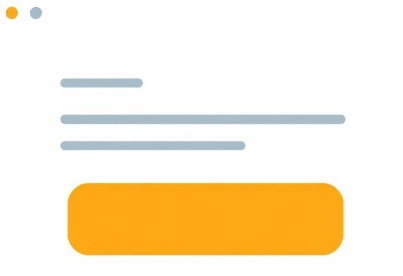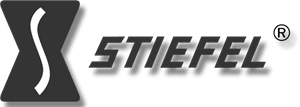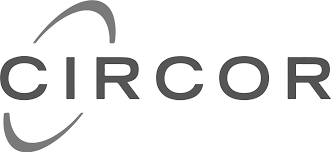Unlock More Leads with This 3-Email Follow-Up Sequence: The Ultimate Home Service Playbook
— The Brevet Group
What if the deal-breaking moment in your home service business isn’t your pitch, your price or your reputation—but what you do after a prospect says, “Let me think about it”? One little sequence could be the difference between an empty schedule and a fully booked week.
The Follow-Up Blind Spot: Why Most Pros Under-Nurture Leads

Truth: Nobody gets excited about follow-up emails. But they’re where the battle is won or lost. Most home service pros pour energy into quotes, then let leads collect (digital) dust when they don’t hear back.
Here’s what’s wild:
- Only 2% of sales happen in the first contact (source: SiriusDecisions).
- But over 80% of deals closed by home service businesses come after at least three touchpoints.
- Your slowest response is often your busiest competitor’s greatest asset.
What Actually Works: The 3-Email Follow-Up Sequence for Home Services
You don’t need a Harvard MBA or a high-pressure script. You just need to show up with timing, relevance and a sprinkle of personality. Here’s the sequence real home service pros use to double their booked jobs—without sounding desperate.
Step 1: The Friendly Nudge (Sent 1 day after quote)
Goal: Comfort, not pressure
Your first follow-up isn’t about sales. It’s about reassurance. Prospects want to know you’re responsive—without feeling chased.
Subject: Just checking in 😊 Hi [Name], Thanks again for letting me send over that estimate for your [service]. If any questions popped up or if anything about your project changed, let me know—happy to help. No rush! I want to make sure you have everything you need. Best, [Your Name]
Step 2: The Social Proof Bump (Sent 3 days after quote)
Goal: Normalize hesitation and build trust
Still no answer? Totally normal. This is when you make it easy to say yes by showing how others like them made the leap. Let your track record do the heavy lifting.
Subject: Quick story that might help Hey [Name], Wanted to share—I just wrapped up a [service] for another customer who was also weighing their options. They told me afterward what made them comfortable moving forward was having all their questions answered up front. If there’s anything I can clarify, hit reply. Or if you need a reference, happy to connect you. Best, [Your Name]
Step 3: The Window Closing (Sent 6-7 days after quote)
Goal: Prompt a decision, not create fear
FOMO works when it’s subtle. Your last email isn’t about ultimatums—it’s a gentle reminder about schedules, pricing or that little extra offer.
Subject: Still interested in your [service]? Hi [Name], Wanted to touch base before I close the week’s schedule. If you’re still interested, let me know so I can save you a spot. If not, no worries—just let me know either way. Thanks again for considering us, [Your Name]
Breaking Down Why This Sequence Works
Let’s get into the psychology. You’re not “following up”; you’re helping them cross the finish line.
- Email 1 removes friction (“You’re not being chased—just helped!”)
- Email 2 normalizes hesitation (“Yep, everyone feels this way.”)
- Email 3 offers a non-pushy nudge (“Your spot is open if you want it.”)
People hate feeling sold to. But they want to feel remembered. This sequence is invisibly persistent—it gets you the callback without the awkwardness.
Common Myths (and How to Avoid Sabotaging Your Own Follow-Ups)
- Myth #1: “If they don’t reply, they’re not interested.”
Truth: Life happens. The average person gets 120+ emails a day. - Myth #2: “Follow-up feels desperate.”
Truth: Silence feels like you don’t care. Controlled, friendly follow-up wins trust. - Myth #3: “I don’t have time.”
Truth: 3 pre-written templates copy-pasted takes 2 minutes per prospect—less than making a coffee.
How to (Actually) Put This Sequence to Work—Starting Now
- Copy these templates into your email drafts or CRM.
- After every estimate, schedule 3 reminders to send these at Day 1, Day 3, Day 7.
- Add a quick personal detail in each one (“Hope the kids’ soccer went well!” works wonders.)
- Tweak for seasons—remind them why acting sooner is smarter (“Spring spots fill up quickly.”)
- Track responses: What subject lines do your clients reply to? Which emails land the gut punch?
“But My Industry’s Different!” (& Why This Still Works)
Plumbers, roofers, landscapers, electricians—all live and die by the unreturned quote. The sequence works because it’s not about what you do, but how you make them feel—cared for, not chased down.
- For high-ticket projects: Add an optional 4th touch with a relevant article or simple checklist.
- For fast-response services: Tighten timelines (e.g., days 1, 2 and 4).
- For commercial accounts: Add a direct call between emails 2 and 3.
Quick FAQ: Turbocharging Your Sequence
Should I use automation?
Only if you can still add a personal touch. Templates + 10 seconds of customization beats a bland auto-blast every time.
What if they reply “not now”?
Tag them for a light check-in in a few months—those “not yets” often become “yes, please.”
How do I handle “ghosting”?
Don’t take it personally. Move the lead to a quarterly re-engagement list rather than pestering.
The One Thing to Do Today
Here’s the cheat code: Pick 5 old quotes sitting in your inbox. Send the first email today. Watch what happens.
That’s it. Perfect isn’t required. The only follow-up that fails is the one you never send.
Recap: How to Win More Leads with Less Stress
- Use the 3-email follow-up sequence to touch your prospects just enough.
- Don’t overthink—use the templates above.
- Be the pro who tries just a little harder, a little more humanly and watch your jobs calendar fill up.
Want to see how seasoned pros do it? Borrow this sequence, make it yours—and never let a hot lead go cold again.






























